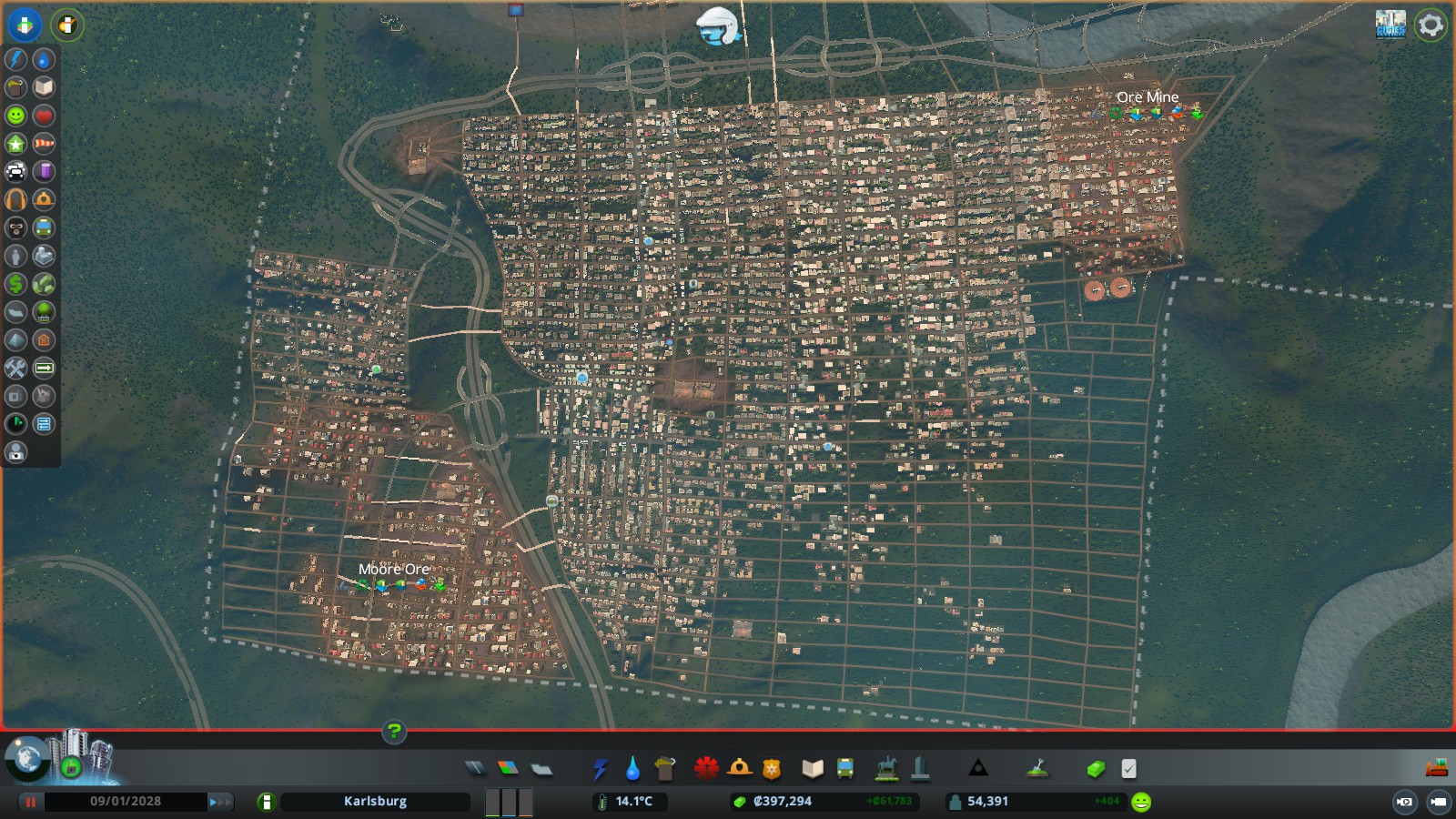This guide will show you how to beat the “By the Dam” scenario by relocating the entire city.
This guide was created by StephDawnheart. You can access the author and her profile at the end of the guide.
Relocation Strategy for By the Dam Scenario
All five scenarios in the Natural Disasters DLC must be completed to unlock the sparkly rainbow unicorn park.
Building a New City
The better-known strategy is to terraform the starting tile and use flood barriers, canals and water pumps to protect the original city.
My strategy that I ended up winning with was different. I decided to relocate the city, which meant greater casualties at the beginning, but much less trouble later on. I built a small emergency shelter and a short radio mast (didn’t have money to do more than that), and drew an evacuation route through the most crowded part of the original city. In Week 2, I issued an evacuation order. Then I spent the remainder of my resources buying the tile to the south, rerouting the highway, and starting a new city:


Once I had enough money, I relocated the now-full emergency shelter to the new city. I relocated the valuable buildings as well: 2 medical clinics, 2 elementary schools, 1 high school, 2 police stations, 2 fire stations, 1 bus depot, 1 small park, 1 incinerator, and 1 water drain pipe. I had to take out both the 20K and 60K loans to build the new city.
Early Game
In the early game, the most important resources are 1) proximity to the highway, and 2) buildable land. My first two attempts at this scenario failed because I was tempted by the rail and sea connections in the northeast. For this successful run, I opted for the buildable land in the south instead, and that worked out much better.
Week 18: The old city was all gone. I had lost about 5,000 people to the flood, but the remaining 2,000 were safely resettled. The shelter was running low on food and the new homes were just about ready, so I clicked “Release Citizens” and then bulldozed the shelter and radio mast. I also bulldozed all the flooded roads in the old city to stop paying maintenance on them. My budget was negative at this point; I reduced water and electricity to the minimum, and cut all other unnecessary expenses, including turning off the schools.

Week 22: My budget was back in the green and my population was growing again. I didn’t have to worry about any more disasters.

The next goal was to zone more residential areas, attract more people, and gradually get the services going again.
Mid Game
Week 100: my city looked like this. I built the intersections by hand because the hilly landscape made it difficult to use pre-built intersections. I also had a mix of specialized industry (forestry and ore), generic industry, low-density commercial, and high-density residential.

The second meteor strike hit the place where the dam used to be. It took out the water pump and 2 windmills that I had to replace, but otherwise there wasn’t any damage.

Week 150: At the halfway point! I got to 30K population and was gaining 400 people per day.

Late Game
Week 200: I got to 54K population. Almost all of it fit into the tile 2 south of the original starting tile.

My highways were getting pretty clogged though and my industries started to complain about lack of buyers, so I purchased 1 tile east and 1 north to truck the goods out to the external railway.

I also set up an underground metro network to take traffic off the highways.

The last meteor strike hit after 55K population. It took out 4 water pumps which I had to replace, but otherwise there was no damage.

Week 231: Nearing the finish line! I was gaining 550 population per day.

I managed to win in Week 232.

This went way better than my previous attempts. I guess the main takeaways for this strategy are: 1) build away from the doomed first tile, and 2) build on flat(ish) land near the highway. You don’t actually need to terraform the landscape or move too far east.